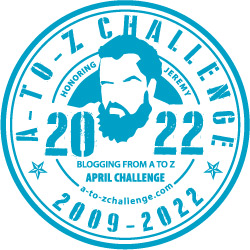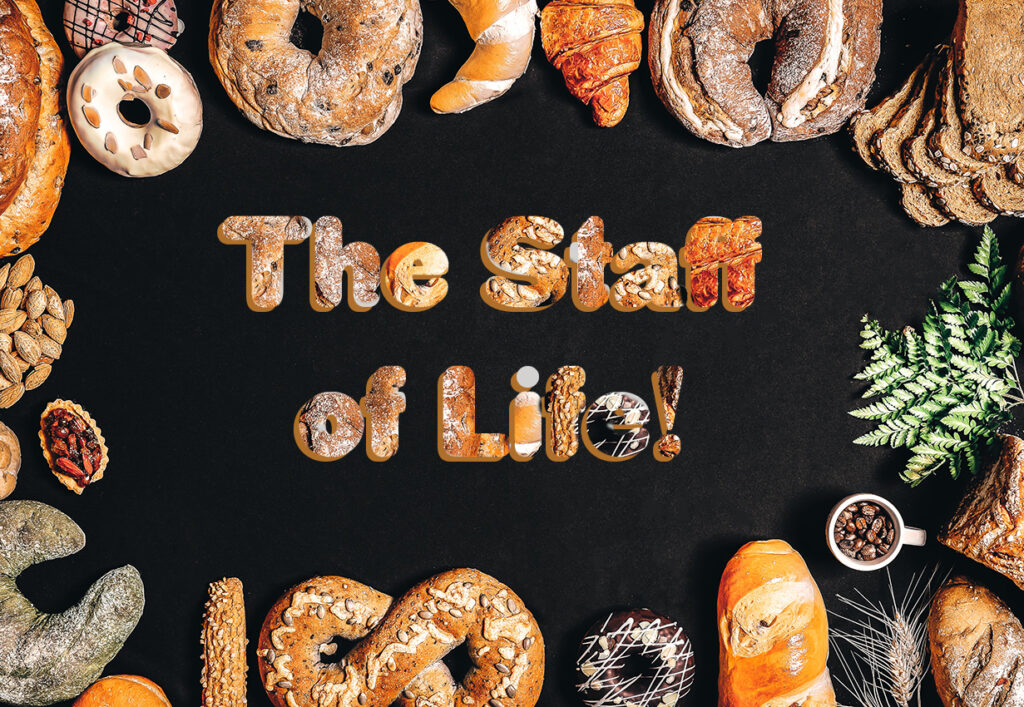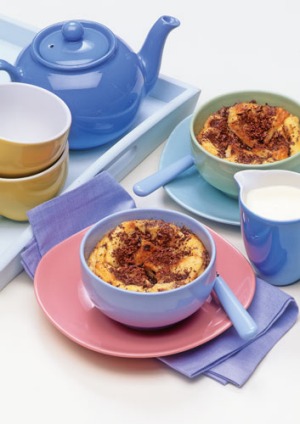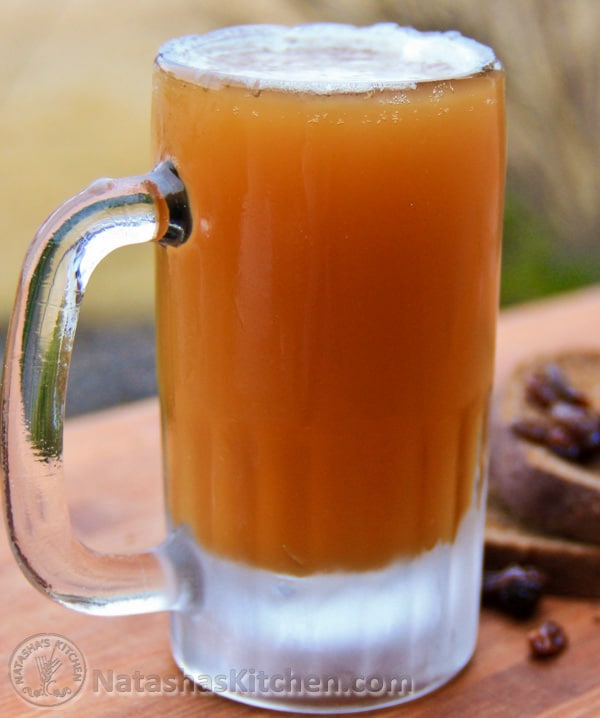
If you have seen my Theme Reveal for the A2Z Challenge 2022, then you will know that I am writing about becoming Vegetarian gradually as a response to the crisis in food supply chains sparked by the pandemic and made worse by the WAR in Ukraine. As well, I am keeping to the theme I originally planned of food which can be eaten on their own as well as becoming ingredients in other dishes…

As the WAR in Ukraine rages on, Ukraine’s minister of agrarian and food policy, announced that – Ukraine’s government has banned the export of wheat, oats and other staples that are crucial for global food supplies as authorities try to ensure they can feed people during Russia’s intensifying war. New rules on agricultural exports introduced this week also prohibit the export of millet, buckwheat, sugar, live cattle, and meat and other byproducts from cattle (see article). As things are, Ukrainian farmers will be lucky to get out to fertilise the soon to sprout winter wheat – ironically, whilst Ukraine is often referred to as the bread-basket of the world, and the yellow colour on the flag of Ukraine symbolises the wheat, the fertiliser used to grow Ukrainian wheat, comes from Russia, illustrating the perfect storm of food supply chains that Putin has, with lack of, or incorrect, foresight, loosed upon the world. Every World War is different, and make no mistake, we are in a world war, because the countries and peoples affected by the WAR, lie far beyond the extent of the fighting. Economies and supply chains require no declarations of war to involve and decimate. European countries will feel the loss of Ukrainian wheat, but the other grains on that list – buckwheat and millet are vital imports to many developing countries such as in Africa. Russia looks likely to take all of Ukraine’s coast and ports so that even if they stop where they are at that point, and back down, how will exports to those developing countries take place?
We may have no choice but to eat less meat since as we saw in the last post, it takes so much grain to raise beef cattle, and we should face this shift with no complaint since there are many people in the world who will have less choice than we do. We will not be being forced to live solely on the staple dish of bread (or as Marie Antoinette would have it – cake) but undoubtedly some things will change our eating habits, whether we like it or not. The rich will, of course, continue to afford the full menu of choices.
Bread is a Staple Food! Of the ten world staple foods, wheat, the source of most breads, is at number three, after maise and rice, which might come as a surprise to Europeans, whose massive use of bread and whose knowledge of foods foreign is often dismal. Maise, or Corn, is, of course, the source of Cornbread, whilst Rice is the main ingredient in most Gluten-Free flour and the bread made from it. After these three staples, comes Potato which is also used in some bread recipes together with some wheat flour. The rest of the ten staples do not significantly feature in the world of bread – Cassava, Soybeans, Sweet Potatoes, Yams, Sorghum and Plantain. If you know of any breads made from these, please correct me by sharing in the comments!
Before looking at bread as an ingredient, let us take a quick trip around the manna itself. The first thing that comes to mind, is a loaf of bread, and to make this, you need hard wheat, as opposed to the soft wheat used for cake and some softer, cake-like breads such as brioche, of which more later. If you take morning toast and sandwiches, you have the main ingredient of two of the daily meals and think of beans/spaghetti/cheese/eggs on toast and that represents supper for some people, or think pizza, or hummus and pitta bread. Most bread is Leavened (made to rise), with yeast, but Soda Bread (risen with baking soda activated by buttermilk) also has it’s place. Sourdough is very trendy but has a long history and depends on natural yeasts which gradually accumulate and become something unique in each baker’s precious starter… But there are many unleavened breads – a plethora of flatbreads – from all over the world – Middle Eastern pitta bread, to South Asian Chapatis or even Aboriginal Australian Dampers.
Some like hearty wholemeal, seedy granary or dabble with ancient grains but many people, at peril to their health, like the refinement of white bread! During World war Two, The refinement of bread was regarded as wasteful and wholemeal was the order of the day, so once the war was over, white bread boomed – a whole generation put themselves at risk of diverticulitis – the cure? Bran cereal made from the bran taken out of the flour to render it white!
But what of bread as an ingredient?
Bread goes stale with varying degrees of speed – not that it can’t be eaten, but it is hard and dry, however, since it is still nutritionally sound, there are many ways to use up stale bread by turning it into an ingredient – breadcrumbs, bread pudding, bread-and-butter pudding, Apple Charlotte – the latter made with bread crumbs. Rusk goes into sausages and that could be meat or veggie and of course, bread itself is Vegan – seems those one-celled creatures, the yeasts, don’t count… I once, briefly, had a restaurant, and I worked hard at developing a range of sophisticated puddings, however, I made a rod for my own back by including bread-and-butter pudding, because over 50% of customers chose that – of course, it may be that they liked my particular recipe, or maybe they couldn’t be bothered to make it at home, though why ever not, I can’t imagine – preparation time, even for a full family size dish, is 10 minutes at most. My restaurant version, though, is even quicker and I made them to order.

Frewin’s Bread and Butter Pudding
Preheat the oven to 170C, 325F or Gas mark 3
Take a ramekin or very small bowl, and grease it with butter
Cut a few slices of Brioch Bread and butter them with softened butter
Cut a slice into pices to fit the base of the ramekin
Sprinkle a teaspoon of the sugar of your choice
Sprinkle half a dozen plump raisins or mixed, dried fruit (must be large, fresh and soft, no small gritty ones)
Repeat till the ramekin is full to the brim (this won’t take much, leave small gaps for the mixture to find its way in)
The mixture for a large pudding is 5 eggs beaten into 1 pint of milk but you will have to scale down for just a couple of ramekins. To make it even richer, substitute a little single cream for part of the milk.
Sprinkle a little sugar over the top of the pudding and make sure no dried fruit is standing proud as it will go bitter if burnt.
You need a pre-heated oven to finish the pudding – but start off in the microwave if you are in a hurry, or bake completely in the oven if you are not. You could assemble your puddings and leave to soak while you have your main course and finish off between courses. One minute or so, in the microwave and a couple of minutes in the oven. Watch as it microwaves and when the surface begins to rise, transfer to the oven. Keep checking and when the pudding has risen (as it will, splendidly) and is browning a little – your pudding is ready!
And now for something completely different!
Kvass is a barely alcoholic drink made from stale rye bread from the Eastern European Countries through the Russias. When the USSR broke up, instead of embracing the western passion for Cocoa-Cola, the people of the east, in a patriotic passion, started to drink a lot of Kvass. what did Cocoa-Cola do? They bought Kvass factories on the basis that if you can’t beat them – join them! I can buy kvass from various Polish shops near me, but I was really intrigued by the fact that this drink was made from bread and that you could make it yourself, so I decided to have a go! There are many recipes on the internet and I am still trying them out, some contain beetroot, or fruit, but here is a good one to start with. So Rye bread is an example of a bread not made with wheat and many people are turning to it to avoid some of the side effects of wheat, gluten, bloating etc. – but the main reason to start including it in your diet is just that it is a rich flavour and when toasted, is crisp on the outside and soft in the middle – yummy! And now you know what to do with the leftovers!
So here were some ideas for using bread as an ingredient – care to share your favourites?
Carrie-Anne over at Welcome to My Magick Theatre, is writing about Ukrainian history and culture for this year’s A2Z Challenge and has a list of charities you may wish to donate to for the Ukrainian cause.
Zalka Csenge Virág posted on International Women’s Day, 10 tales about women and war (including a Ukrainian tale) over at The Multicoloured Diary.
